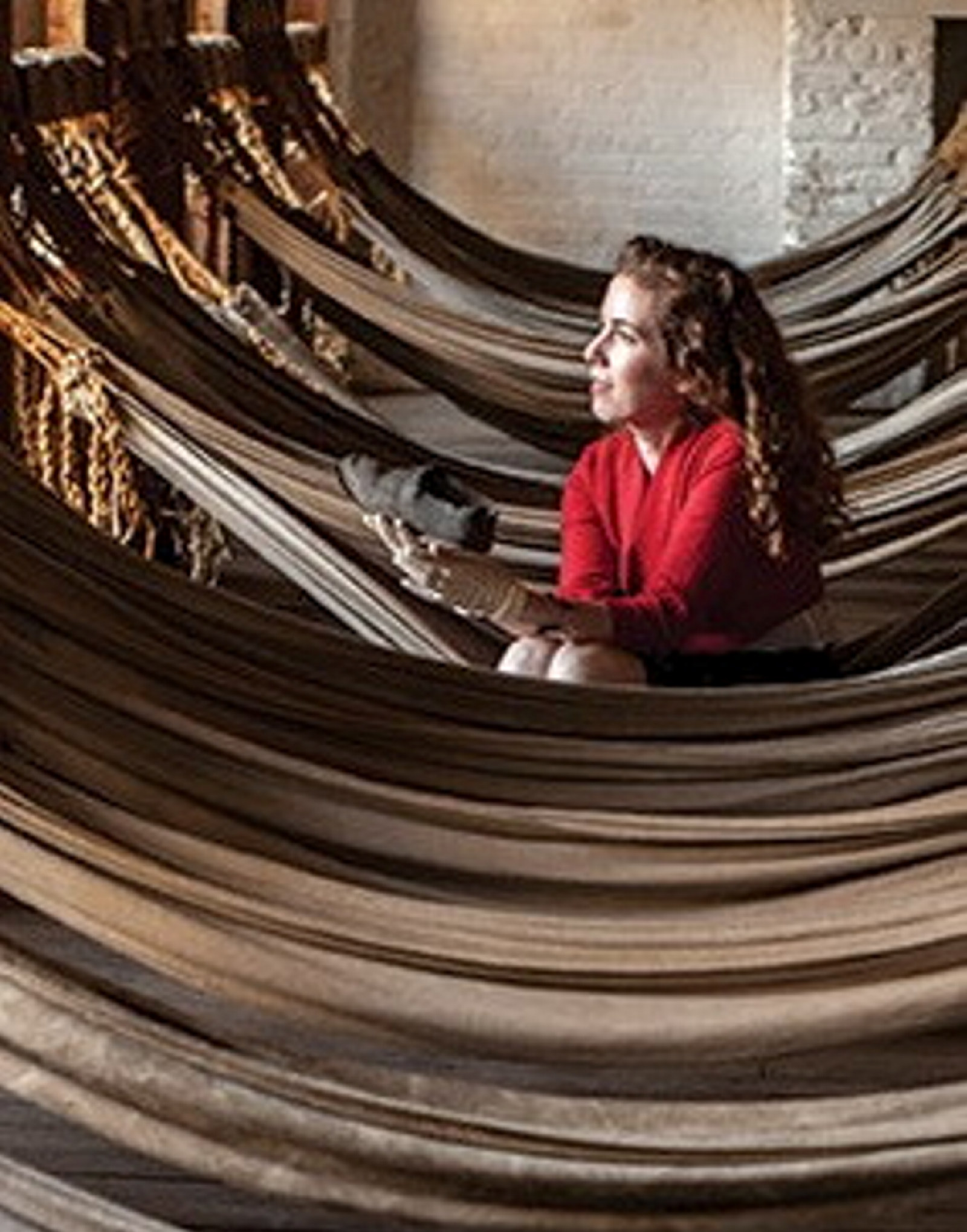1826
The hot Sydney summer of 1826 ended with almost 1000 convicts living at the barracks, and the wards were just as overcrowded as ever.1 But the official plan was to move them out of Sydney, and the townspeople and farmers alike were relieved to hear it. In mid-August, most of the wards quickly emptied; only 350 convicts were left,2 but the government wanted them out too.
A few, like Irish convict Peter Killeen, would stay with the government, but most of the others, like Thomas Atkins, were sent out of town to work for the colonists.
… hurried up the country carrying suspended from their shoulders, their only consolation a rug and a blanket, to be worked like oxen … under a burning sun… with no better encouragement than the threat of the lash.
Convict Edward Lilburn, 18403
Macquarie’s barracks were now seven years old, and their grandeur, order and cleanliness had begun to fade, while crime and corruption were slowly creeping in. That’s why a new rule book had just been drafted and ex-convict Deputy Superintendent Profile: John Connor was to see it put to use. Clerk Charles Lucas4 carried out his daily ritual of recording in the musty leather-bound ledger books in Connor’s office the particulars of every convict entering and exiting the barracks. Messengers handled the endless stream of correspondence, adding to the growing mountain of paperwork on Connor’s desk, overflowing with letters from settlers requesting that convicts be assigned to them.
Distribution
About once a month now, the barracks’ gates were flung open for a couple of hundred newly landed convicts to flood through into the yard.5 In previous years, new arrivals had been inspected at the jail on George Street, under the shadow of the hangman’s gallows. Now, the convicts were marched up directly through the Government Domain to the barracks, where they were assembled in the yard and inspected by the Colonial Secretary.6 Then they waited, from a few hours to several weeks, to see what the game of chance had in store for them – private assignment as a servant or farmhand, or labouring in a government gang under the punishing sun.
The male prisoners ... were landed … and were then conducted to the Prisoners’ Barracks in Hyde Park. His Excellency the Governor in Chief inspected these men in the barrack-yard; and was pleased to hold out to them the prospect of every proper encouragement, on condition of exemplary good behaviour; after which they were distributed throughout the Country.
Sydney Gazette, 18267
Breakfast
For the rest, the daily grind continued. Woken by the bell at sunrise, they shuffled out of the wards, trudging down the stairs and into the mess hall. The convicts now started their day with a new sort of barracks breakfast – a bland porridge-like mush called ‘hominy’, made from corn meal boiled over the fire.
They breakfast on ’ominee, of which a quantity generally remains, principally from a natural dislike which the men … entertain towards this description of food.
Sydney Gazette, 18278
As usual, convicts grouped together in messes of six men, but only some of them were lucky enough to find seats in the mess rooms. Some had to stand at tables, and when there were no more tables, the rest sat on the ground to eat. Prisoners could not be trusted with cutlery, apparently not even spoons, so they fed themselves using two tins per six men, scooping the food from a large dish on each table, or the floor.9
… the issues of corn meal without a spoon to use it with … presents a scene as disgusting as it is degrading.
The Monitor, 182610
The rations were wholesome, but some men were probably left hungry. A convict named Condon escaped the barracks in August; after being captured, he blamed his bushranging on the lack of food at the barracks.11
Work
After the gangs were assembled, the gates were thrown open and constable James McDonnell and gatekeeper John Gould conducted their usual inspections. More and more government property was going missing, and the convicts were to blame. It must have been a cold morning when Martin Kelly tried to leave the barracks with a government blanket wrapped around him, without even trying to hide it.12 Earlier in the year, Patrick Hennegan had also stolen a barracks blanket, and both he and Kelly were banished to a worse penal establishment.13
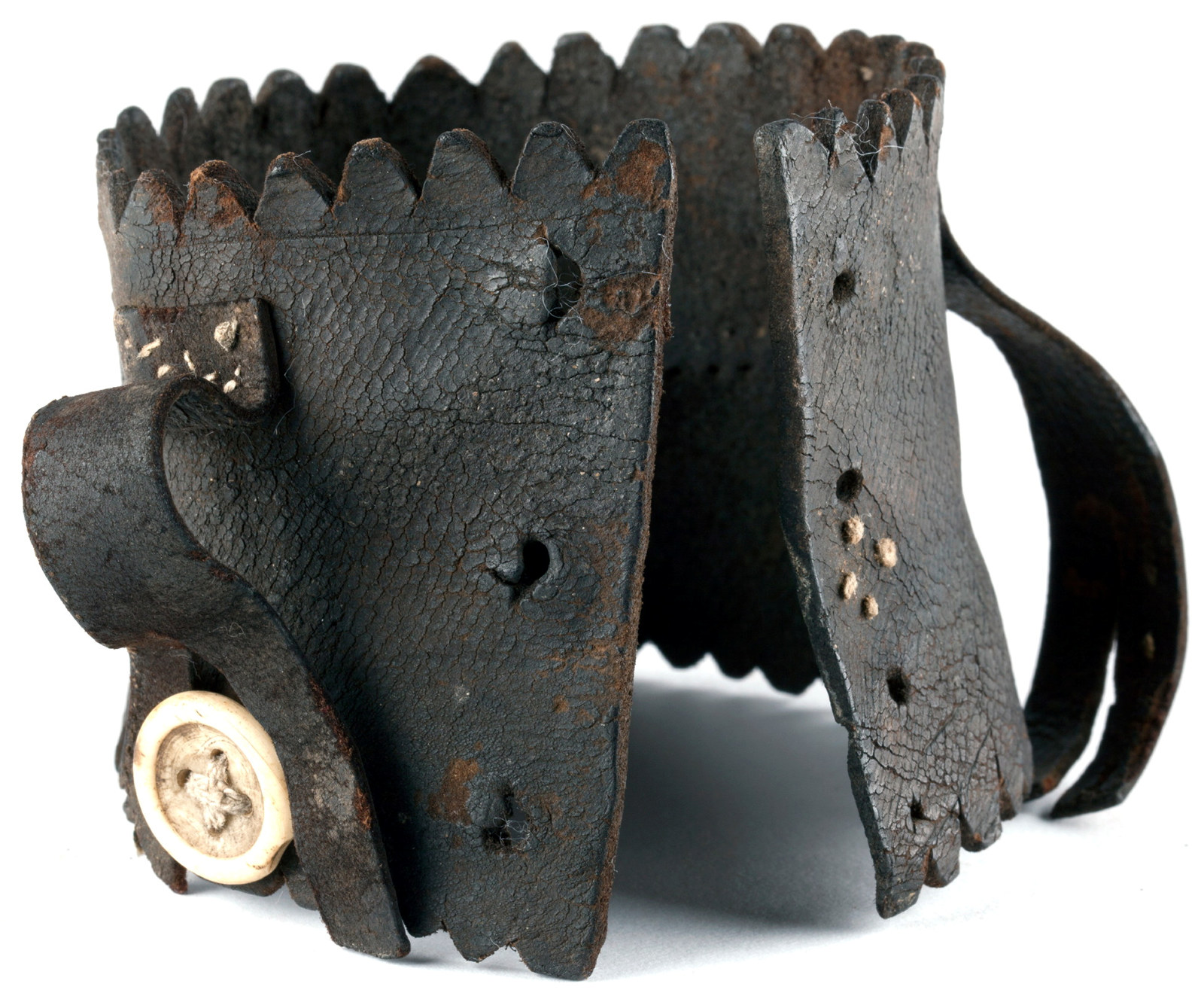
Convict Sydney
Leg Iron Guard
A stunning example of an improvised handicraft, this leather ankle guard or ‘gaiter’ was made to protect a convict’s ankle from leg irons
The men marched out reluctantly in their gangs for work, some of the worst characters shuffling along with their feet shackled together by a gang chain. Some of the men had leather cuffs hidden beneath their trousers, to protect their ankles from the chafing metal. Occasionally, there was one who had deviously hammered his leg-iron rings into ovals, so he could remove them when not being watched. Those working outdoors could look forward to an hour of rest from 8am to 9am, thanks to Connor’s new rule book.14
As they passed along, the chains clanking about their heels... the downcast countenances – and the whole appearance of the men, exhibited a truly painful picture.
Roger Therry, remembering the 1830s15

Convict Sydney
Iron Gang Chain
Convicts who re-offended after arriving in the colony could be assigned to do hard labour in an iron gang
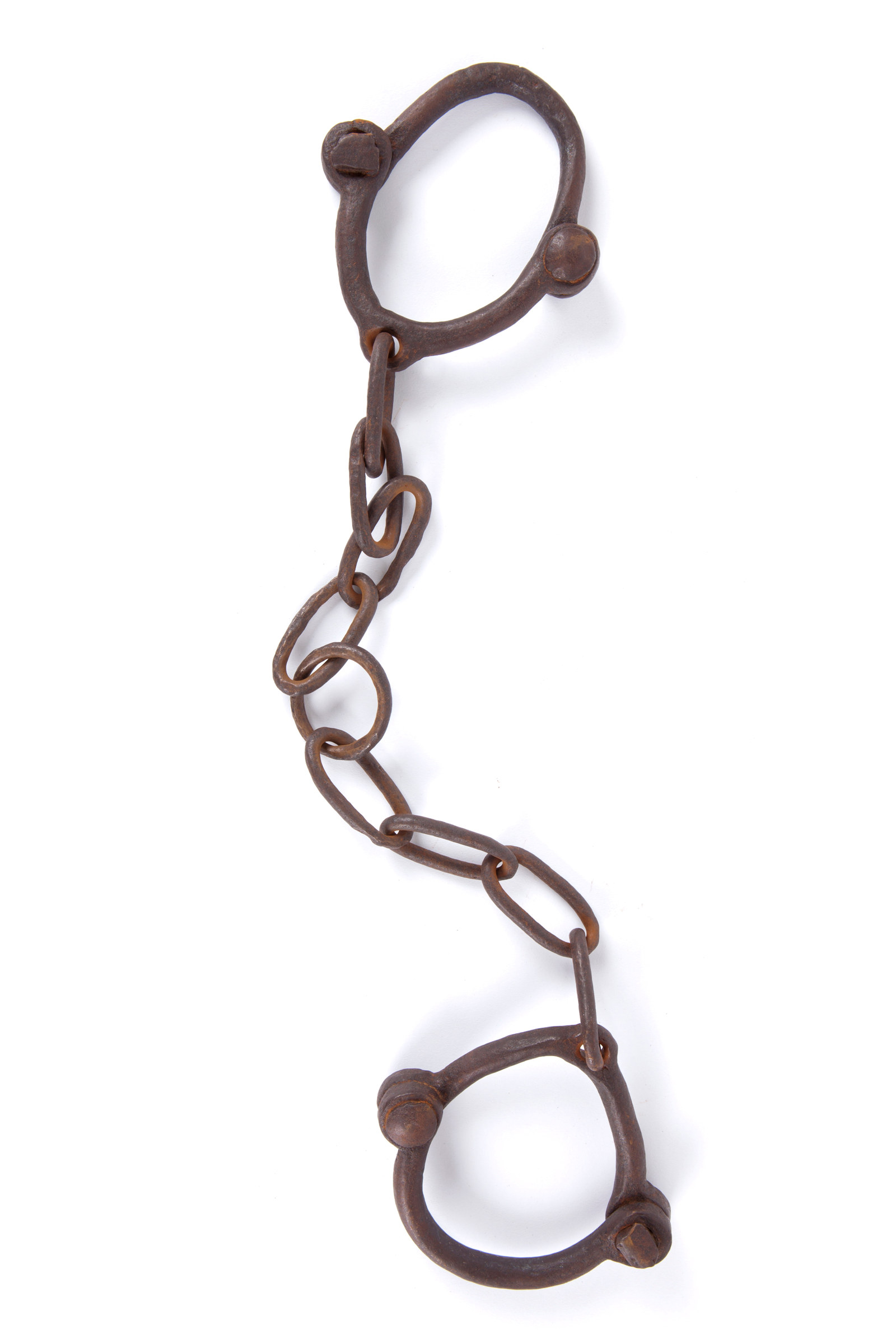
Convict Sydney
Leg irons, ovalled
Leg irons chafed the ankles, made loud clinking noises with every movement, and made working difficult and tiring
Barracks work
Most of the convicts had left for the day, but there was also plenty to do around the barracks. This year, a new shoemaking and tailoring establishment was opened at the barracks, where 23 skilled leatherworkers made sturdy shoes, and 26 needleworkers churned out suits of convict slop clothing and police uniforms.16 The clock keeper wound the barracks’ timepiece with an enormous Object: crank handle, but despite his best efforts, it still wouldn’t keep good time.17 The elderly and frail raked the gravel yard, swept out the wards, opened the windows, shook out the dusty blankets and folded each one to display the government Object: broad arrow mark and the number that matched the hammock to which it belonged.18 But the sleeping wards and hammocks were beginning to show their age. While new supplies arrived from time to time, the barracks’ blankets would have been ripe with the odour of sweaty bodies. They were only washed twice a year.19
Clothing
Now, twice a year, barracks convicts were issued with two shirts, a jacket, a pair of trousers and a pair of shoes, all marked with the broad arrow.20 With their soap rations, the convicts washed their clothes in the washhouse along the eastern wall with water from the barracks’ well, ‘as frequently as is necessary’.21 For those who didn’t like doing the laundry, that probably meant not at all. And they washed their bodies just once a week, if at all.
Dinner
Returning around midday for dinner (lunch), the convicts joined their messmates at the tables again. The usual greasy stew was on the menu, but it was not as salty as it used to be, now made with fresh beef or mutton, not the dried-up salted meat morsels of previous years.22 As usual, the barracks’ bakers had been at work all day, baking loaves in the ovens in the northern buildings. But with so many mouths to feed, they couldn’t keep up, and more bread had to be baked elsewhere and delivered.23 A large communal loaf was placed on each table in the mess hall but, left on the shelf too long, it was likely already rock hard. In February, convict Thomas Haynes refused the stale bread, and convinced his mates to do the same. He was ordered to receive 50 lashes of the cat-o’-nine-tails.24 In recent years, some of the convicts had taken to gambling their rations, and the cooks sometimes kept some for themselves.25 Connor thought his new rules would put a stop to all that.
Punishment
It was the constables’ job to keep the barracks’ convicts honest, but that was a difficult task, and they quickly became unpopular. In May and June, convicts Alexander Brazil and Thomas Hadlow threatened the constables with knives,26 for which they were flogged and sent to the treadmill. The convicts thought Superintendent Connor was a fair man, but he certainly had his own ways of dealing with ruffians – writing them up in his ‘Black Book’27 and locking them up in his new watchhouse. In winter the convicts rioted, trying to rescue a prisoner being escorted there. Throwing stones and broken bricks, they were led on by ringleaders Elias Connell and James Divine, who were then banished to a secondary penal settlement for three years.28
The watchhouse wasn’t as strong as Connor hoped, though – one bunch of notoriously bad men, awaiting transfer to another penal settlement, had removed bricks from the wall and escaped through a narrow hole.29 Convict watchman John Schofield, who was accused of assisting them, probably took a bribe for his efforts. A newly established bench of magistrates at the barracks heard all these cases of misdemeanours and corruption,30 and sent the offenders off to be flogged outside the eastern wall, to work in leg-irons, or to walk on the treadmill, which, compared to flogging, convicts found pretty easy to handle. One day, a witty convict named Samuels asked his mates, ‘Anybody for the Mill today?’ For this little joke, he got 50 lashes of the cat-o’-nine-tails.31
It is well known that the tread-mill has lost almost all its terrors, for those who have been upon it once or twice are no way uneasy at returning to it...
Sydney Gazette editor, 182632
Free time
Come Saturday, convicts had a chance to find their own work, and pocket any coins they earned. Some found the odd job, but there were usually more than a few hanging about with nothing to do. By the afternoon, where were they to go? Connor’s new rule book said no spirits were to be brought into the barracks, but that didn’t stop them heading out to where all the action was, in the public houses (pubs) at The Rocks and around the town. Convict Michael Coffee learned the hard way that arriving late to the barracks when drunk and disorderly would result in being locked in a solitary cell to sober up, for a week or more. At least one other convict simply ignored the rules, and was discovered with a bottle of spirits stashed away in his hammock.
Evening muster
If any men arrived late after the sunset muster, or were found on the town, their punishment was now more severe – solitary confinement, flogging, or wearing leg-irons. After having their names ticked off the list, the men broke off into groups and milled about the yard, smoking, chatting, maybe comparing tattoos and scars. Some huddled in the shadowy corners of the compound for a quick game of ‘chuck penny’ or ‘pitch and toss’33 before the overseers did their rounds – Connor’s new rules forbade any form of gambling.
The lean-to recreation sheds against the compound walls sheltered only about one quarter of the men in the barracks, and in heavy rain, the convicts were left out and refused access to the buildings.34
...let the weather be ever so unfavourable – let the rain fall in torrents, no admission is granted to the mess-rooms… the unfortunate Briton is to be seen shivering with wet in some angle or nook…
The Monitor, 182635
When the bell sounded at 8pm, the convicts trudged wearily off to the wards, ready for the final muster in their hammocks at 8.30pm.36 The wards of the upper floors were always filled up first, to allow the overseers to keep a closer eye on the men.37
Escape
Then the doors were locked and at 9pm the main gates were slammed shut and locked. But the convicts got out all the same. Some just headed out for some fun, ‘tipping’ (bribing) the constables and gatehouse keepers to let them out through the gates. Others preferred to scale the wall, like William Bird and John Horton and his mates, who went out this way one night in February, but were found later out on the town.38 Some planned to be gone for good – four men who scaled the wall only a few days after arriving on their transport ship Sir Godfrey Webster were caught and flogged.39
In the wards
It was close quarters as usual in the wards, with every hammock occupied and the remaining convicts left with no choice but to sleep on a blanket on the cold, hard floorboards. Young and old, streetwise or ‘square’ (honest), they were all crammed into the wards together, despite the Superintendent’s instructions to separate them to protect the innocent.40
In the sleeping wards, many are provided with bad hammocks; but many are without them, sleeping on the ground – a custom far removed from cleanliness and destructive of health!
The Monitor, 182641
In the hammocks, stashed away under shirts or in pockets, or secreted beneath the floorboards, the convicts secured their meagre belongings such as tobacco pipes. But these could easily disappear overnight – some of the men were mates, but most of the rest were thieves, and couldn’t be trusted.
Church
On Sunday morning, wearing clean shirts and with shaved faces, the convicts gathered for the mandatory church muster, the usual rowdy rabble reduced to silence for Divine Service at St James’ Church across the road.42 With the remainder of the day free, convicts scattered in all directions about the town. But their day of leisure was short, the bell calling them back for muster at 6pm to prevent loitering, theft and gambling on street corners into the evening.43
Footnotes
- The Australian, 30 March 1826, p2.
- Sydney Gazette (SG), 26 August 1826, p2.
- Edward Lilburn, A complete exposure of the convict system, Thomas Colmer, Lincoln, Herts, 1840, p7.
- SG, 3 October 1825, p2.SG, 3 October 1825, p2.
- See landing of convicts from Marquis of Hastings, SG, 12 January 1826, p3.
- Fiona Starr, ‘Colonial crossroads: convict, immigrant and asylum women populations at Hyde Park Barracks, 1819 to 1887’, unpublished research paper, Sydney Living Museums, 2015.
- SG, 12 January 1826, p3.
- SG, 6 June 1827, pp2–3.
- The Monitor, 15 September 1826, p2.
- The Monitor, 15 September 1826, p2.
- The Australian, 30 August 1826, p3.
- The Australian, 2 September 1826, p3.
- SG, 12 January 1826, p3.
- Instructions for the Guidance of the Superintendent and Subordinate Officers, of the Establishment of Convicts in Hyde Park Barracks, R Howe, Government Printer, Sydney, 1825, p4.
- Roger Therry, Reminiscences of thirty years’ residence in New South Wales and Victoria, Sampson Low, Son and Co, London, 1863, 2nd edn, pp41–2.
- Hely to Macleay, 10 October 1827, Historical Records of Australia 1, vol xiii, pp663–4; Hely noted that the workshops produced on average 207 pairs of shoes and 457 suits of clothing per month.
- The Australian, 10 August 1827, p2.
- Instructions, pp4, 15.
- Instructions, p7.
- Instructions, pp11–12.
- Instructions, p7.
- ‘Fresh beef’, SG, 15 September 1825, p1.
- SG, 17 May 1826, p1.
- SG, 11 February 1826, p3.
- Instructions, p8.
- SG, 6 May 1826, p3; SG, 14 June 1826, p3.
- Instructions, p12.
- SG, 19 August 1826, p3.
- SG, 16 December 1824, p3.
- SG, 19 August 1826, p3.
- The Monitor, 18 August 1826, p7.
- SG, 23 August 1826, p2.
- SG, 24 February 1835, p2.
- The Monitor, 15 September 1826, p2.
- The Monitor, 15 September 1826, p2.
- Instructions, p5.
- Goulburn to Connor, re musters and supervision of convicts, 6 February 1823, Colonial Secretary’s Papers, NSW, NRS 937, reels 6004-6016, 297.
- SG, 1 February 1826, p3.
- The Australian, 2 February 1826, p4.
- Instructions, p6.
- The Monitor, 15 September 1826, p2.
- SG, 15 November 1826, p2.
- The Monitor, 30 June 1826, p2.
Published on
Related
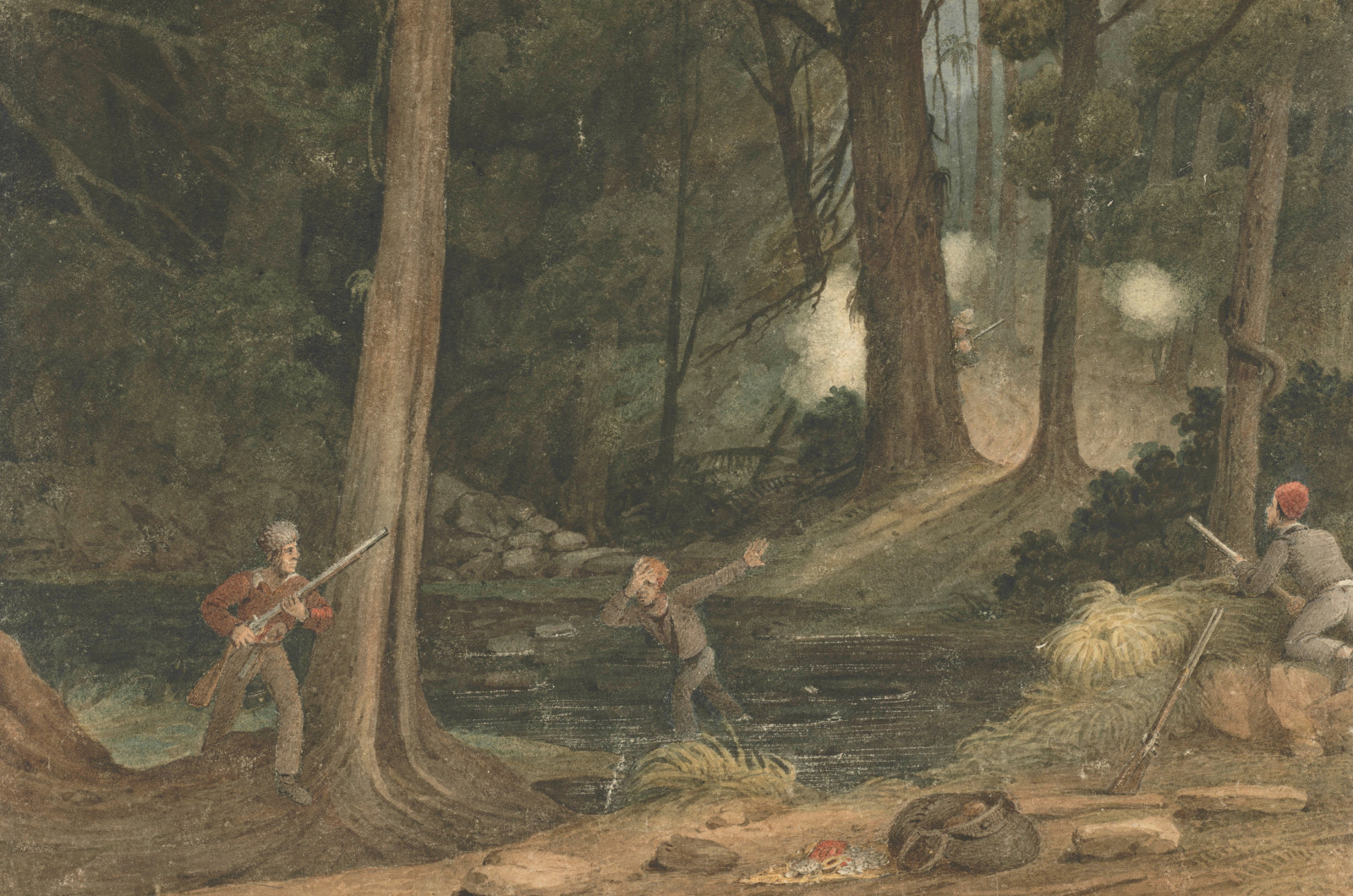
Convict Sydney
A world of pain
The combined aims of the assignment system, from 1826 onwards, were to equip farmers with cheap convict labour, to disperse convicts away from towns (and other convicts) and to keep an eye on each worker’s whereabouts and treatment
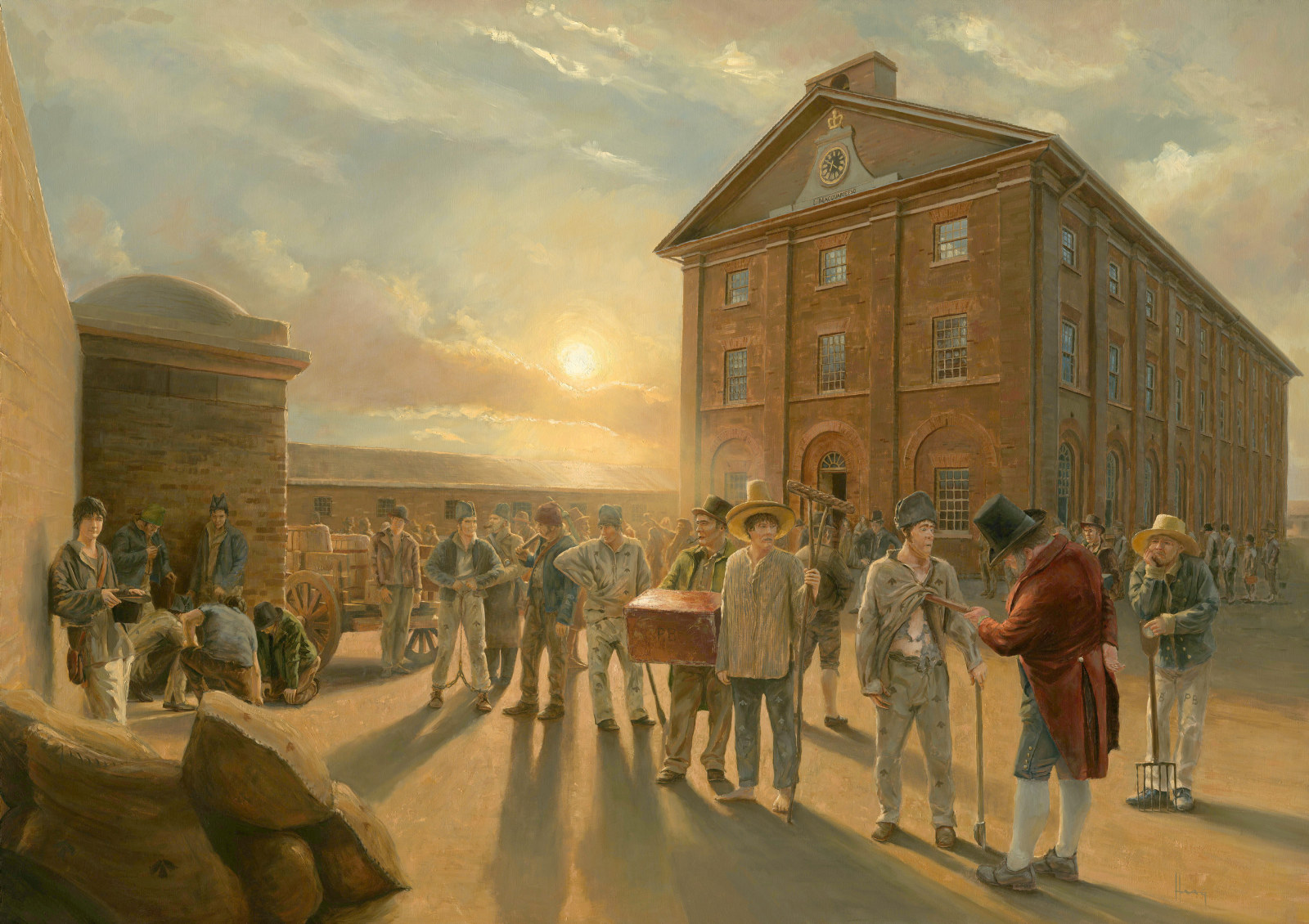
Convict Sydney
Convict Sydney
From a struggling convict encampment to a thriving Pacific seaport, a city takes shape.

A short history of the Hyde Park Barracks
In the early 19th century, the Hyde Park Barracks was the central convict institution and crossroads for tens of thousands of convicts shuffled back and forth throughout the colony. It's now on the World Heritage list, recognised among the world’s most important cultural heritage places linked to forced migration, colony building and convict culture.
